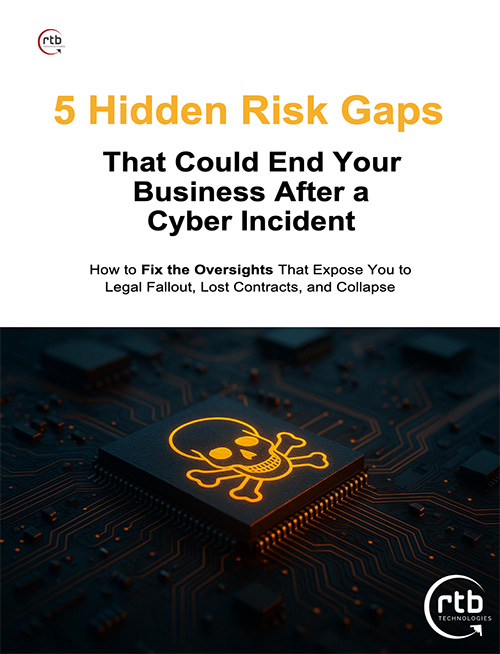
Power outages, cyberattacks, hardware failures and natural disasters rarely arrive with a warning. And when they strike, the fallout can cripple a growing business. Restoring a single file isn’t the same as keeping your operations running. If your team can’t access critical systems, support remote work, or keep customers and stakeholders informed, even a brief outage can spiral into a long-term setback.
A proactive cybersecurity partner should prepare you not just with backups, but with a complete continuity strategy—so your business stays online no matter what.
Backups Aren’t Enough – You Need Continuity
Backups are foundational. But they only get you halfway there. What you really need is a business continuity plan—a proactive roadmap that keeps your people productive during and after a major disruption.
When servers go dark or your office becomes inaccessible, an old backup sitting on a shelf doesn’t help your bottom line. Without a clear blueprint for restoring operations, you risk lost revenue, reputational damage, and even regulatory penalties.
Backups vs. Business Continuity: What You Must Know
- Backups let you retrieve data.
- Continuity keeps your business running—no matter what.
A robust continuity plan answers questions like:
- How quickly can we be back online?
- Where will our team work if the office is down?
- Which applications are mission-critical?
- Who activates each step of the recovery process?
And it includes essentials such as:
- Encrypted, off-site, immutable backups
- Clearly defined RTO (Recovery Time Objective) and RPO (Recovery Point Objective)
- Remote-work readiness with secure VPN and device management
- Redundant systems and automatic failovers
- Quarterly disaster-simulation drills
If your cybersecurity partner can’t walk you through these elements clearly, you’re depending on luck—not planning.
Real Disasters, Real Consequences
This isn’t fear-mongering—it’s what’s happening right now in businesses like yours:
- Hurricanes in Florida left companies without cloud access, halting operations for weeks.
- Floods in North Carolina wiped out on-site servers and months of invoicing.
- Wildfires in California turned entire office buildings to ash, with no off-site recovery in place.
- Ransomware attacks that corrupted untested backups, forcing multi-million-dollar payouts.
These events don’t discriminate by company size. If you have employees, customers, revenue—and data—you need a continuity plan.
Ask Your Cyber Risk Partner These Questions Today
If disaster strikes tomorrow, will your business keep moving? Here’s what you should know:
- If ransomware hits, how fast can we recover critical systems?
- Are our backups tested regularly—and do they cover every application?
- What’s the failover plan if our office floods or burns?
- Does our continuity approach satisfy HIPAA, FTC Safeguards, PCI-DSS or other regulations?
- Can we serve clients seamlessly if everyone must work remotely?
If you’re not 100% confident in the answers, you may already be exposed.
Disasters Happen. Downtime Doesn’t Have To.
You can’t stop every storm, outage or cyberattack—but you can control your response.
- A good partner restores you after the fact.
- A great partner keeps you running without skipping a beat.
Ready to lock down your resilience? Click here to Book your Cyber Risk Assessment Session!



